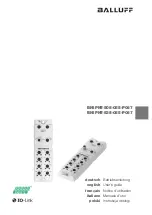
2.0 SYSTEM DESIGN
© Presby Environmental, Inc., Design & Installation Manual, September 2020 Edition
16
Pump System Vent Locations
•
A low vent shall be installed into any aspect
of the vent manifold on the distal end of the
bed (or each section in a multiple bed
system).
•
The vent manifold shall include use of offset
adapters.
•
A high vent is attached to an unused D-box
outlet.
•
The low and high vents may be swapped,
provided the D-box is insulated against
freezing in cold climates.
•
For options to relocate the high vent, see
Remote Venting.
•
For options to eliminate the high vent, see
Bypass Venting.
Remote Venting
If site conditions do not allow the vent pipe to slope toward the system, or the owner chooses to utilize remote
venting for aesthetic reasons (causing the vent pipe not to slope toward the system), the low point of the vent line
must be drilled creating several ¼ in holes to allow drainage of condensation. This procedure may only be used if
the vent pipe connecting to the system has:
•
A high point that is above the highest point of all AES pipes or the D-box (2 in minimum for each); and,
•
A low point opened for drainage which is above the SHWT (see diagram below).
By-Pass Venting
When a field is fed using pumping or dosing, it is necessary to provide air flow through the system by using either
an independent high vent at the field or
“by
-pass ventin
g”.
For by-pass venting, the system is plumbed by
attaching Sch. 40 or SDR 35 PVC from the D-box back to the septic tank or pump chamber if no effluent filter is
present
. This process “by
-
passes” the pump
line and allows air to flow from the low vent to the roof vent which
functions as the high vent. The bypass vent line invert must rise 2 in above the D-box before dropping to pump
chamber or septic tank.









































